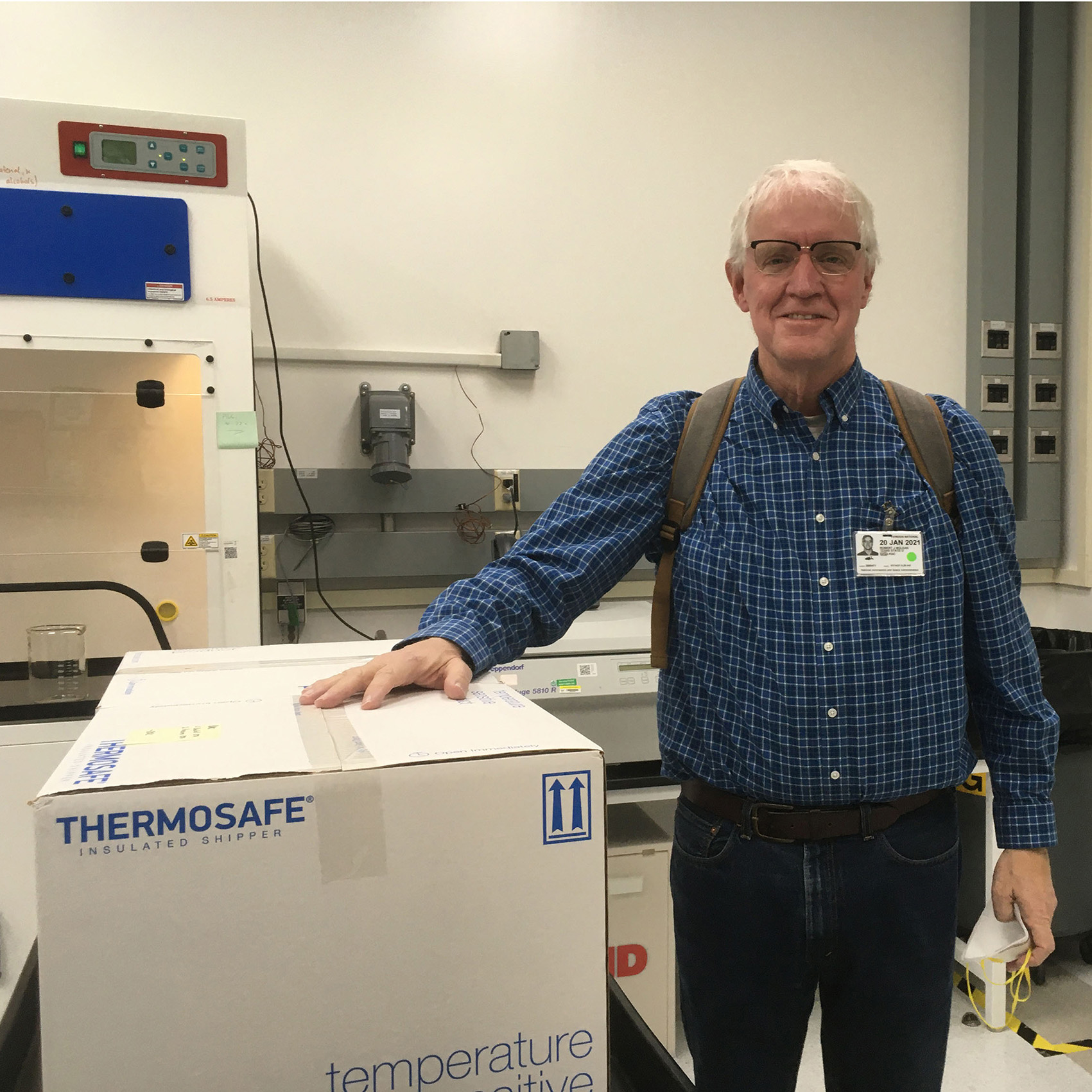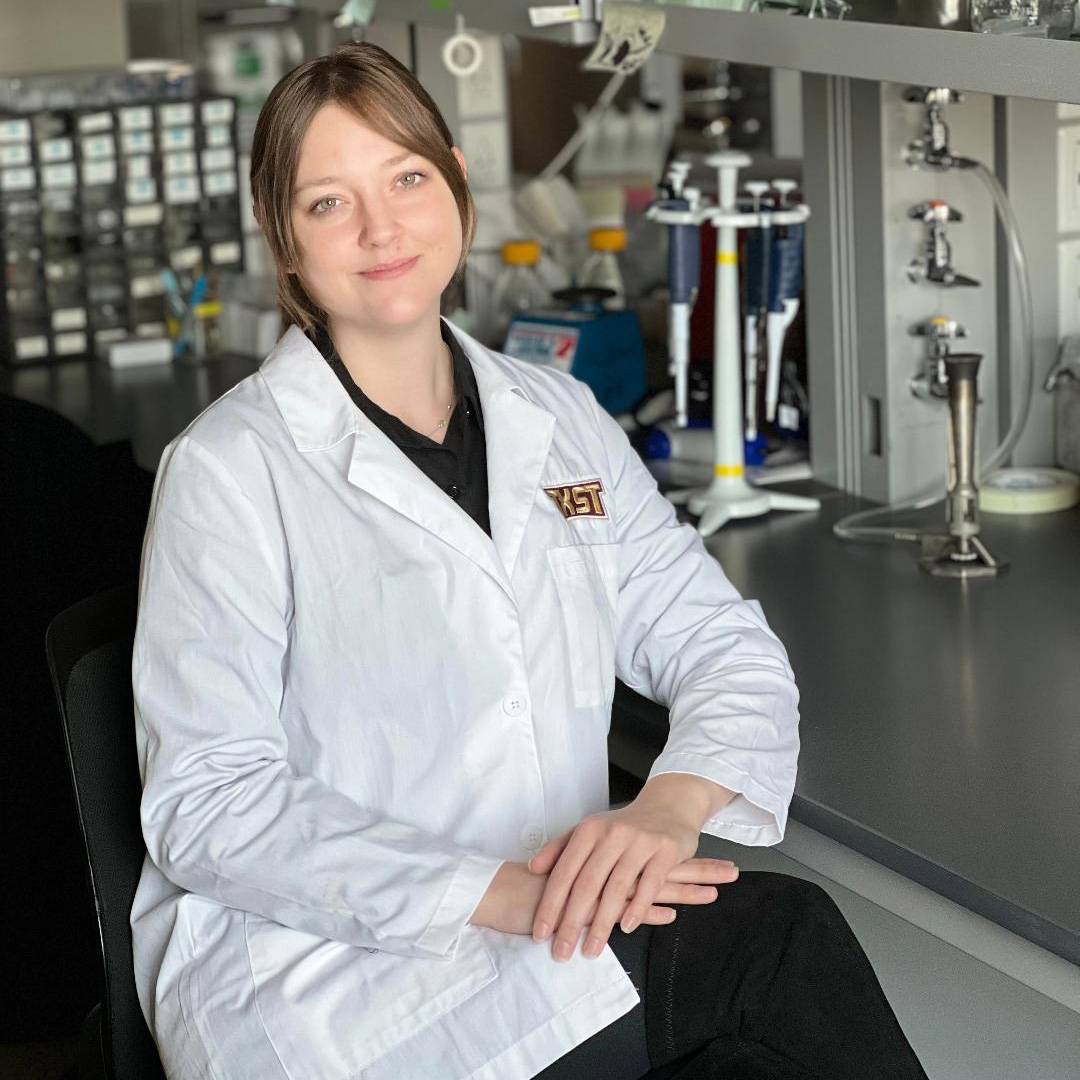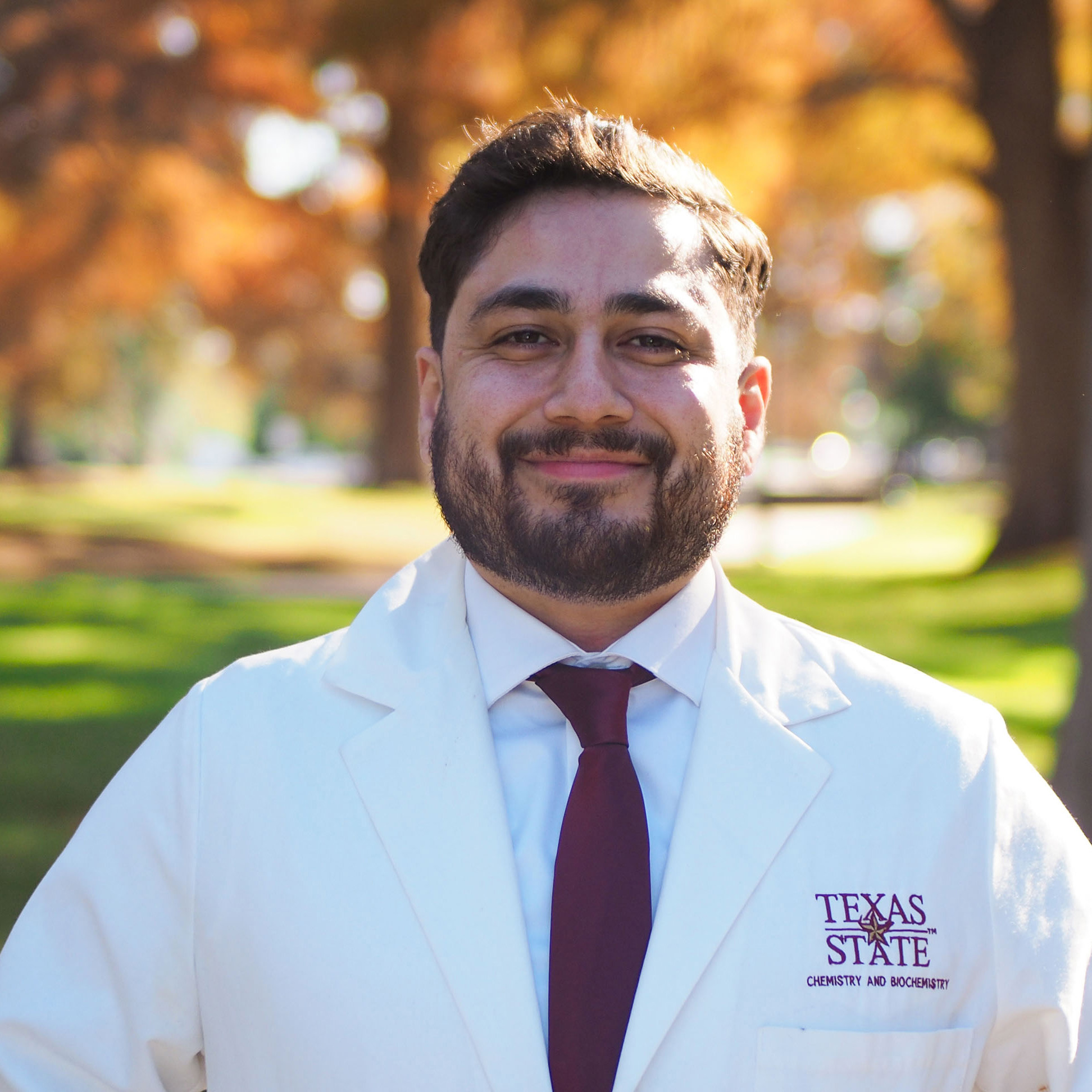Kate Malazonia | February 21, 2024
On Nov. 9, 2023, the SpaceX Falcon rocket departed Kennedy Space Center in Florida and began its trajectory to the International Space Station (ISS). Among other things, the mission, “SpaceX CRS-29,” carried a collaborative investigation developed by researchers at Texas State University, Arizona State University (ASU), and NASA.
Led by Robert J.C. McLean, Ph.D., the team of TXST graduate students consists of Taylor M. Ranson, Evan G. Ortiz, Aron Valdez, and Amber Busboom. Several other former graduate students, Starla G. Thornhill, Quentin DiPasquale, Shelbie Powers, Julia Widmer, and Calvin Tran, also helped.
The investigation, “Polymicrobial Biofilm Growth and Control during Spaceflight,” is fundamental to knowing how we can protect one of the most critical resources aboard any space vehicle: water.
As NASA states, “Microorganisms in biofilms can become resistant to traditional cleaning chemicals, leading to contamination of water treatment systems and potential health risks to astronauts.”
Ultimately, the experiment can help manage health concerns for astronauts and aid in machinery maintenance during space travel.

Robert J.C. McLean
McLean is a regent’s professor in the Department of Biology at TXST where he also serves as the principal investigator for this investigation. His work focuses mainly on bacterial communities on surfaces (biofilms), and more recently, microbial interactions during mixed species growth.
“Specifically with the space program — if we are going to travel beyond low Earth orbit, we need to be able to resolve issues with biofilms, otherwise they may interfere or even cause the outright failure of key life support systems,” McLean said.
Over his 35-year academic career, McLean has supervised one Ph.D. dissertation and 41 M.S. theses. His passion for passing his knowledge down to the next generation of biologists is evident in his enthusiasm for collaborating with them.
“I am excited to have the privilege of working with graduate students, both in my own lab and externally.”

Taylor M. Ranson
Ranson is pursuing her master’s of science in biology at TXST where she researches space microbiology. She is an instructional assistant, teaching a section of a microbiology lab. As a graduate research assistant in McLean’s lab, her role entails processing and imaging biocells when they return from the ISS to gain a better understanding of how biofilms form in microgravity.
“To do this, I take the biocell that contains the biofilms and observe it with the confocal microscope,” Ranson said. “The confocal microscope is an essential step in this experiment as it provides a visual analysis of the biofilms to assess the density and longevity at different time points. After this, I remove the biofilms from the stainless-steel coupons, and take the coupons to the JEOL SEM microscope to obtain images of the corrosion.”
Ranson also credits her mentor, McLean, for the rapid progress she has made in her research and personal development.
“He doesn’t just care about your academics and lab performance,” she said. “He pushes his students to better themselves but also to practice self-care. He saw the potential in me and encouraged me to take on presentations at conferences while also assisting me in publishing my research. It has truly been a privilege to work alongside him and learn from him.”

Evan G. Ortiz
Ortiz is currently pursuing a master’s of science in biology and serves as the bioinformatician for this project. He adds to the team's capabilities through data analytics, with a focus on microscopy image analysis. Ortiz’s work with Jelena Tesic, Ph.D., on corrosion measurements has the potential to play a key role in detecting microbial corrosion, which is a multi-billion-dollar problem worldwide.
“Our collaboration with Dr. Jelena Tesic's Data Lab team at TXST is dedicated to developing state-of-the-art image analysis applications,” Ortiz said. “Together, we extract details from biofilm microscopy images, uncovering the impact of microbial-induced corrosion in spaceflight conditions. The combination of our expertise in biofilm microbiology and computational image analysis is pivotal to yielding novel insights crucial for future space missions.”
Ortiz credits his graduate program at TXST for the opportunities he has been given.
“In my master's program, I have had the privilege to engage in cutting-edge research alongside a community of bright and inspiring individuals,” he said. “This transformative experience has played a key role in shaping my professional development, providing me with a solid foundation to further contribute to our understanding of life in space.”
Ortiz also credits McLean, describing him as a “trailblazer in the field of biofilms.”
“His pioneering work during the STS-95 mission in 1998 is marked as one of the initial investigations into the impact of spaceflight on biofilms,” he said. “Grand as he may be, Dr. McLean is profoundly humble and easygoing. His mentorship has molded my perception of what it means to be a scientist.”
Starla G. Thornhill
Thornhill completed her undergraduate research, masters’ degree in 2016, and Ph.D. in 2020 with McLean. During her Ph.D., she collaborated with Jiseon Yang, Ph.D., research assistant professor at ASU, and the two of them largely developed all the experimental protocols that were used in the spaceflight experiments that flew originally on CRS-21 (Space X21 in 2020) and more recently on CRS-29. She now works at NASA.
Other team members
Aron Valdez recently gained her master’s of science in biology and conducted genome analysis of mixed bacteria populations that grew on the ISS for 117 days. Amber Busboom is currently pursuing a master’s of science in biology and she is responsible for designing the polymerase chain reaction protocol to identify and monitor individual members of a five-species microbial population that is commonly isolated from the water recovery system in the ISS. Quentin DiPasquale gained his master’s of science in biology in 2019 and Calvin Tran gained his master’s of science in biology in 2022. The work of both of these students and the work of Shelbie Powers and Julia Widmer contributed to McLean’s research on biofilms.
Senior personnel originally associated with this grant and project include:
- Robert J.C. McLean, principal investigator
- Cheryl A. Nickerson, ASU, co-principal investigator
- Jennifer Barrila, ASU, co-investigator
- C. Mark Ott, NASA Johnson Space Center (JSC), co-investigator
- Jiseon Yang, research assistant professor, ASU
- Starla G. Thornhill, microbiologist, Human Health and Performance Contract, NASA-JSC
- Richard Davis, ASU, key technical help
- Sandhya Gangaraju, ASU, key technical help
- Alistair I.L. McLean, developed software code to enable bacterial measurements from confocal microscopy data
The research team anticipates getting back living bacterial cultures from the flight experiment at the end of February.
For more information on the mission and investigation, visit NASA’s experiment webpage or mission webpage.
Share this article
For more information, contact University Communications:Jayme Blaschke, 512-245-2555 Sandy Pantlik, 512-245-2922 |
